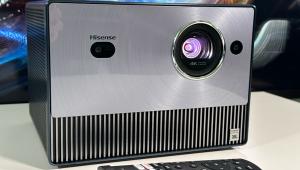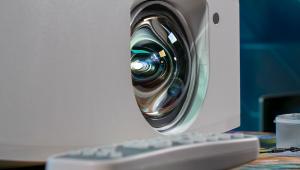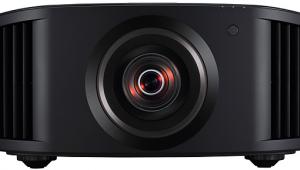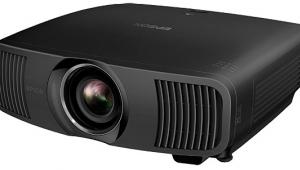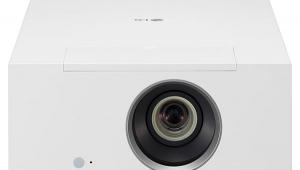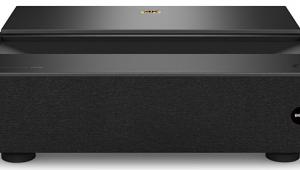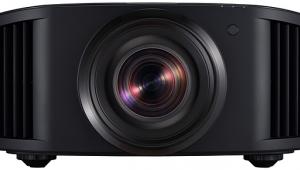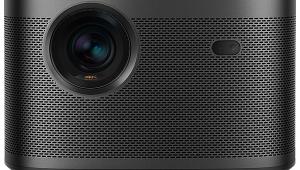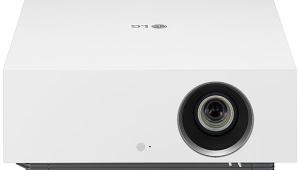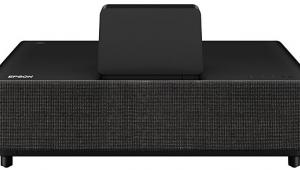Digital Projection M-Vision Cine 230 DLP Projector
Digital Projection International (DPI) might not be a familiar projector company to many home-theater enthusiasts—at least, not as familiar as Epson, JVC, Optoma, and Sony. But commercial users know the name well, because DPI has been supplying high-end, high-priced DLP projectors for broadcast, theatrical, simulation, medical, education, and corporate applications since 1997. In fact, DPI was Texas Instruments' first DLP partner and the original innovator of the 3-chip DLP projector.
Over the last few years, DPI has been directing more of its efforts toward home-theater applications and now offers seven series of products for that market. The most affordable home-theater model is the M-Vision Cine 230, a single-chip design that offers many of the same features found in the company's more expensive offerings for less than $7000.
Features
- Single-chip DLP engine using DarkChip4 DMD and 6-segment RGBRGB color wheel
- 1920x1080 native resolution
- Lens options include 1.85-2.40 zoom (reviewed), 1.56-1.86 zoom ($500 more)
- Optimized for Rec.709 (HDTV) color gamut
- Manual zoom, focus, horizontal and vertical lens shift for flexible placement
- 2 HDMI 1.3a inputs, 2 component-video inputs
- User-selectable preset and customizable gamma
- 10-bit deinterlacer with 3:2 and 2:2 extraction and pixel-based motion-adaptive interpolation
- Internal test patterns make setup easier, as does blue-only mode
- Automatically detects active input; this can be a pain if more than one input is active, so I disabled this feature and selected the input manually
- Aspect ratio and overscan controls are separate and independent, as they should be but rarely are
- Color space and gamut controls are separate and independent, as they should be but rarely are; in fact, they are rarely labeled correctly as they are here

User Interface
 Remote
Remote
- Like many projector remotes, this one is simple and well-organized
- Inputs can be selected with dedicated buttons, though they are labeled with numbers rather than type of input (HDMI, component, etc.), which would be better
- Menu settings can be stored in different memory locations and recalled with dedicated buttons; however, there are four memory locations but only three recall buttons
- Dedicated buttons provide direct access to controls for aspect ratio, contrast, brightness, sharpness, gamma, overscan, noise reduction, BrilliantColor, and color temperature as well as internal test patterns; I wish more TVs offered such direct access to controls without having to navigate the menus
Menu
- Menus very well organized; can see all parameters and settings as soon as you enter menu system
- Entering menu system opens last menu accessed; very nice!
- Menu disappears after 30 seconds of inactivity; timeout should be user-definable
Setup
- Zoom and focus are adjusted by turning rings on lens barrel; zoom ring is inside chassis cowling, awkward to reach, can easily change focus by accident; set zoom before focus
- Horizontal and vertical lens shift are adjusted using a supplied Allen wrench in holes on top of case; must remove logo plate to expose holes
- Quick Start Guide says "logo plate should be gently lifted and rotated to gain access to the adjustment points"; this is not correct—you slide the plate sideways and lift off
- Adjusting lens shift feels very crude with lots of play in the control before it engages in either direction; still, I was able to align the image on the screen very well using internal test pattern
- Setting basic picture controls presents no problem; projector passes below-black and above-white, allowing easy setting of brightness and contrast
- Saturation and Hue controls unavailable with HDMI input; blue-only mode confirmed that they were set correctly
- White-on-black crosshatch pattern reveals slight chromatic aberration, but not nearly as bad as some I've seen, indicating good optics


